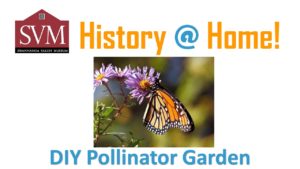A pollinator garden is planted with pollinating insects in mind. Nectar and pollen producing plants attract pollinating insects known as pollinators. Pollinator gardens should provide the following types of plants, various nectar producing flowers, and shelter providing plants.
WHY POLLINATORS ARE IMPORTANT
Pollinators, such as most bees and some birds, bats, and other insects, play an important role in flowering plant reproduction and in the production of most fruits and vegetables.
Examples of crops that are pollinated include apples, squash, and almonds. Without the assistance of pollinators, most plants cannot produce fruits and seeds. The fruits and seeds of flowering plants are an important food source for people and wildlife. Some of the seeds that are not eaten will eventually produce new plants, helping to maintain the plant population.If these crops are not pollinated they will no longer be able to produce the fruits and vegetables we rely on for nutrition.
WHAT IS POLLINATION?
Pollination results when the pollen from the male part of the flower (stamen) is moved to the female part of the same or another flower (stigma) and fertilizes it, resulting in the production of fruits and seeds. Some flowers rely on the wind to move pollen, while others rely on animals to move pollen.
Animals visit flowers in search of food,shelter,and nest-building materials. Bees intentionally collect pollen.While butterflies and birds, move pollen because the pollen sticks to their body while they are collecting nectar from the flowers. All of these animals are considered pollinators.
DIY Pollinator Garden:
Materials:
Watering can or Hose
Sunny place to plant
Gardening Gloves
Small gardening rake
Plants:
Woodland Phlox
Milkweed
Cone Flower
Jo Pye Weed
Hydrangea
Turtlehead
Foam Flower
Creeping Phlox
Spiderwort
* Check with your local green house or Co Op to learn about local and regional plants that can be used as pollinator plants.
Steps:
- Find a Sunny place to plant in your yard. Watch the sun for a day and see which spot in your yard that receives the most sunlight. Then mark out the space you want your garden to be planted in.
- Buy your plants. Tip: Consult with your local green house owner about local and regional plants that would be best in a pollinator garden. Reach out to your local Co Op for information on pollinator plants. The plants listed above are for the Western NC region.
- Arrange your plants in the space you are going to plant. Be sure to place similar plants with each other. Once you like how they are arranged you can plant them.
- Once planted be sure to water them thoroughly. Then water them every other unless it is hot. If it is hot, water them everyday. If it rains do not water them on that day.
- Enjoy your new pollinator garden. Please do not use pesticides on your garden. This will kill the pollinators. Just enjoy it.
Extra Resources:
